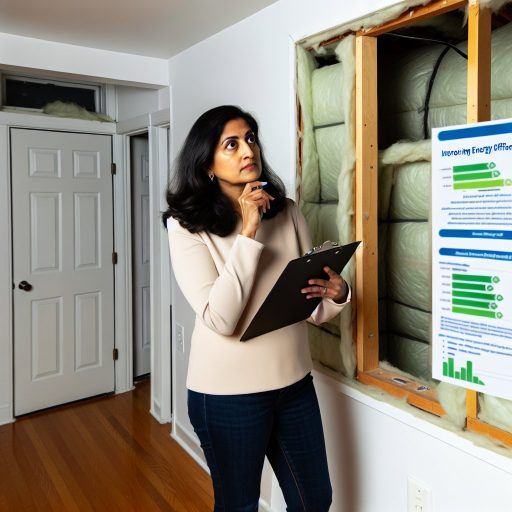Understanding the Legal Framework Surrounding Security Deposits
Overview of Security Deposit Laws
Security deposit laws vary significantly by location.
Most jurisdictions require landlords to follow specific protocols.
Understanding these laws helps prevent disputes.
State-Specific Regulations
Each state has its regulations on security deposits.
For instance, California limits security deposits to two months’ rent.
In contrast, Texas does not impose a maximum amount.
Research your state’s laws to ensure compliance.
Common Legal Requirements
Landlords typically must provide a written receipt for the deposit.
They are also required to return the deposit within a certain timeframe.
Additionally, landlords must itemize any deductions made.
This transparency helps foster trust and reduces disputes.
Tenant Rights and Responsibilities
Tenants have the right to receive their deposit back promptly.
They must also fulfill their rental agreement obligations.
Failing to do so may jeopardize their rights to the deposit.
Dispute Resolution Options
When disputes arise, both parties should consider mediation.
Mediation allows for open dialogue in a less formal setting.
If mediation fails, legal action remains an option.
Consulting a local attorney for advice can be beneficial.
Common Reasons for Security Deposit Disputes
Unjustified Deductions
Landlords often withhold security deposits for repairs that aren’t necessary.
Tenants may dispute these deductions if they believe they are excessive.
A clear agreement on damages can prevent such disputes.
Evidence of Wear and Tear
Normal wear and tear is often a significant cause of conflict.
For instance, faded paint and worn carpets should not incur charges.
Both parties should document conditions when moving in and out.
Discrepancies in Documentation
Lack of proper documentation can lead to misunderstandings.
Landlords must provide detailed, itemized lists of deductions.
Tenants should keep receipts and photos as proof of property condition.
Return Timeline Issues
Delays in returning security deposits can spark disputes.
Tenants expect deposits back within the timeframe set by law.
Late returns may suggest bad faith on the part of the landlord.
Poor Communication
Failing to communicate can exacerbate disputes over deposits.
Landlords and tenants should maintain open lines of communication.
Regular updates on deposit status can alleviate tensions.
State-Specific Laws
Different states have varying laws on security deposits.
Tenants need to know their rights according to local legislation.
Landlords should also understand their legal obligations.
Steps to Take Before Disputing a Security Deposit
Understand Your Lease Agreement
Your lease agreement holds essential information.
Review it thoroughly before initiating a dispute.
Look specifically for clauses on security deposits.
Pay attention to details regarding deductions and return timelines.
Document the Condition of the Property
Before moving in, document the property’s condition.
Take photographs or videos of each room.
This evidence will be crucial for future disputes.
Ensure you also document any damage that existed prior to your move.
Keep a detailed list of issues and concerns as they arise.
Communicate with Your Landlord
Reach out to your landlord before escalating to a dispute.
Share your concerns about the security deposit deductions.
Clearly communicate your points in writing.
This process can often resolve issues amicably.
Review State and Local Laws
Each state has specific laws regarding security deposits.
Familiarize yourself with these regulations.
Understand your rights as a tenant in your region.
Many local governments provide resources to help tenants.
Gather Supporting Evidence
Compile all relevant documents and communications.
Include your lease agreement, photographs, and emails.
This supporting evidence strengthens your case.
Organize everything for easy access during discussions.
Consider Mediation Services
Mediation can provide a neutral platform for resolution.
Many communities offer mediation services for tenants.
This process can save time and reduce stress.
Check local resources for information on mediation options.
You Might Also Like: Property Inspections for First-Time Landlords
Documenting the Condition of the Property
Importance of Documentation
Documenting the property condition is essential for security deposit disputes.
It provides clear evidence of the property’s state at move-in and move-out.
Moreover, it protects both landlords and tenants from misunderstandings.
Creating a Detailed Inventory
A detailed inventory list should be created during the initial move-in inspection.
This list must include descriptions of each room and its contents.
Additionally, each item should have notes regarding its condition.
Consider using photographs to supplement the inventory list.
Visual evidence adds credibility to your documentation.
Conducting Move-In and Move-Out Inspections
Both landlords and tenants should participate in inspections at both times.
During move-in, walk through the property and document any existing damages.
After the final move-out, repeat the inspection process collaboratively.
Document any changes and take note of any damages that occurred during tenants’ occupancy.
Utilizing Checklists
Employing a checklist can streamline the documentation process.
Checklists ensure that no detail is overlooked during the inspection.
This method helps create a more organized and thorough report.
Also, share this checklist with tenants for transparency.
Storing Documentation Safely
Store all documentation in a secure, easily accessible location.
Digital copies of documentation can be maintained alongside physical records.
Make sure these documents are backed up regularly.
Having organized records simplifies the dispute resolution process.
Explore Further: Lease Agreements for Lease Renewal Negotiations
Effective Communication Strategies Between Landlords and Tenants
Establishing Clear Expectations
Start by discussing the terms of the security deposit upfront.
Clearly outline what the deposit covers during the lease agreement.
Ensure both parties understand the return process.
Documenting Conditions
Conduct a thorough walk-through before the tenant moves in.
Take detailed photos of the property’s condition.
Share this documentation with the tenant for transparency.
Regular Check-Ins
Schedule periodic check-ins to address concerns promptly.
Use these opportunities to reinforce open communication.
Ask tenants for feedback on maintenance and property conditions.
Listening Actively
Always listen to tenant concerns and disputes carefully.
Acknowledge their feelings and frustrations genuinely.
Let them know their opinions matter in resolving issues.
Offering Solutions
Be proactive by suggesting feasible solutions to disputes.
Maintain a collaborative approach to problem-solving.
For instance, consider a partial refund if necessary repairs are delayed.
Written Communication
Always follow up verbal communication with written confirmation.
This provides a clear record for both parties.
Use emails or letters to summarize agreements or discussions.
Seeking Mediation
If disputes persist, suggest mediation as an option.
A neutral third party can help facilitate the conversation.
Such measures can lead to a satisfactory resolution for all.
Delve into the Subject: Lease Agreements for Senior Living Communities

Mediation and Alternative Dispute Resolution Options
Understanding Mediation
Mediation offers a neutral ground for landlords and tenants.
An experienced mediator facilitates the discussion.
This process encourages open communication and understanding.
Parties can express their grievances and expectations.
Consequently, mediation often leads to amicable solutions.
Benefits of Mediation
Mediation is generally faster than traditional legal processes.
It allows both parties to retain control over the outcome.
Furthermore, mediation can be less costly than litigation.
Privacy is another key advantage of mediation.
All discussions during mediation remain confidential.
Choosing a Mediator
Selecting the right mediator is crucial for success.
Look for someone experienced in tenant-landlord disputes.
A qualified mediator should have strong communication skills.
Additionally, they must remain impartial and neutral.
Alternative Dispute Resolution Options
Apart from mediation, there are other resolution methods.
Arbitration is one such option to consider.
In arbitration, a neutral third party makes a binding decision.
This method can be quicker than going to court.
However, parties typically give up some control over the outcome.
Combining Approaches
Some use both mediation and arbitration together.
Parties can agree to mediate first and then arbitrate if needed.
This combination ensures a thorough exploration of issues.
It maximizes the chances for a satisfactory resolution.
Preparing for Mediation
Proper preparation enhances the mediation experience.
Gather all relevant documents related to the deposit dispute.
Make a list of key points to discuss during the session.
Establish clear objectives for what you want to achieve.
This preparation allows you to engage effectively.
Delve into the Subject: Lease Agreements for Commercial Properties
Legal Actions: When and How to Escalate the Dispute
Recognizing the Right Time to Escalate
Understanding when to escalate a dispute is crucial.
Consider taking legal action when communication fails.
If the landlord refuses to return the deposit, reassess your options.
Gather all relevant documents and evidence prior to escalation.
Exploring Legal Options
Consult a legal professional for advice on your specific case.
This step ensures you understand your rights clearly.
Look into small claims court if the amount is manageable.
Filing a complaint can often catalyze a resolution.
Documenting Evidence Effectively
Maintaining thorough documentation is essential for legal proceedings.
Collect correspondence between you and the landlord.
Photographic evidence can strengthen your position.
Keep records of any repairs or maintenance issues.
Preparing for Court
After deciding to proceed, prepare your case carefully.
Organize your documentation in a clear manner.
Practice presenting your case in a concise way.
Be ready to answer questions from the judge.
Understanding Possible Outcomes
Legal actions can yield various results.
Be prepared for possible mediation or settlements.
You may win the case and obtain your deposit.
Alternatively, you may face the cost of legal fees.
Considerations for Landlords
Landlords should also evaluate their position before escalation.
Understand the laws governing security deposits in your area.
Evaluate whether a dispute merits legal action or can be resolved amicably.
Consider the long-term implications of litigation on your reputation.
Best Practices for Landlords to Minimize Security Deposit Disputes
Clear Lease Agreements
Begin with a well-drafted lease agreement.
Ensure it clearly defines security deposit terms.
Include details on the deposit amount and conditions for deductions.
Clarify the process for returning the deposit after tenancy.
Both parties should understand their rights and responsibilities.
Document Property Conditions
Conduct a detailed walk-through before tenants move in.
Take clear photographs of each room and key fixtures.
Document any existing damages or issues thoroughly.
Share this documentation with the tenant for transparency.
This step helps prevent misunderstandings later.
Conduct Regular Inspections
Schedule routine inspections during the tenancy.
Notify tenants in advance for access to the property.
Document the property’s condition at each inspection.
Address any maintenance issues promptly to avoid escalation.
Regular communication fosters a collaborative environment.
Provide a Detailed Move-Out Checklist
Create a comprehensive move-out checklist for tenants.
Include cleaning instructions and necessary repairs.
This checklist should align with your lease agreement.
Encourage tenants to use it to ensure they meet expectations.
A clear checklist helps minimize disputes during the move-out process.
Return Deposits Promptly
Return security deposits within the timeframe required by law.
Include an itemized list of any deductions made.
Clearly explain reasons for these deductions to the tenant.
A prompt return demonstrates professionalism and builds trust.
Being transparent reduces the likelihood of disputes.




